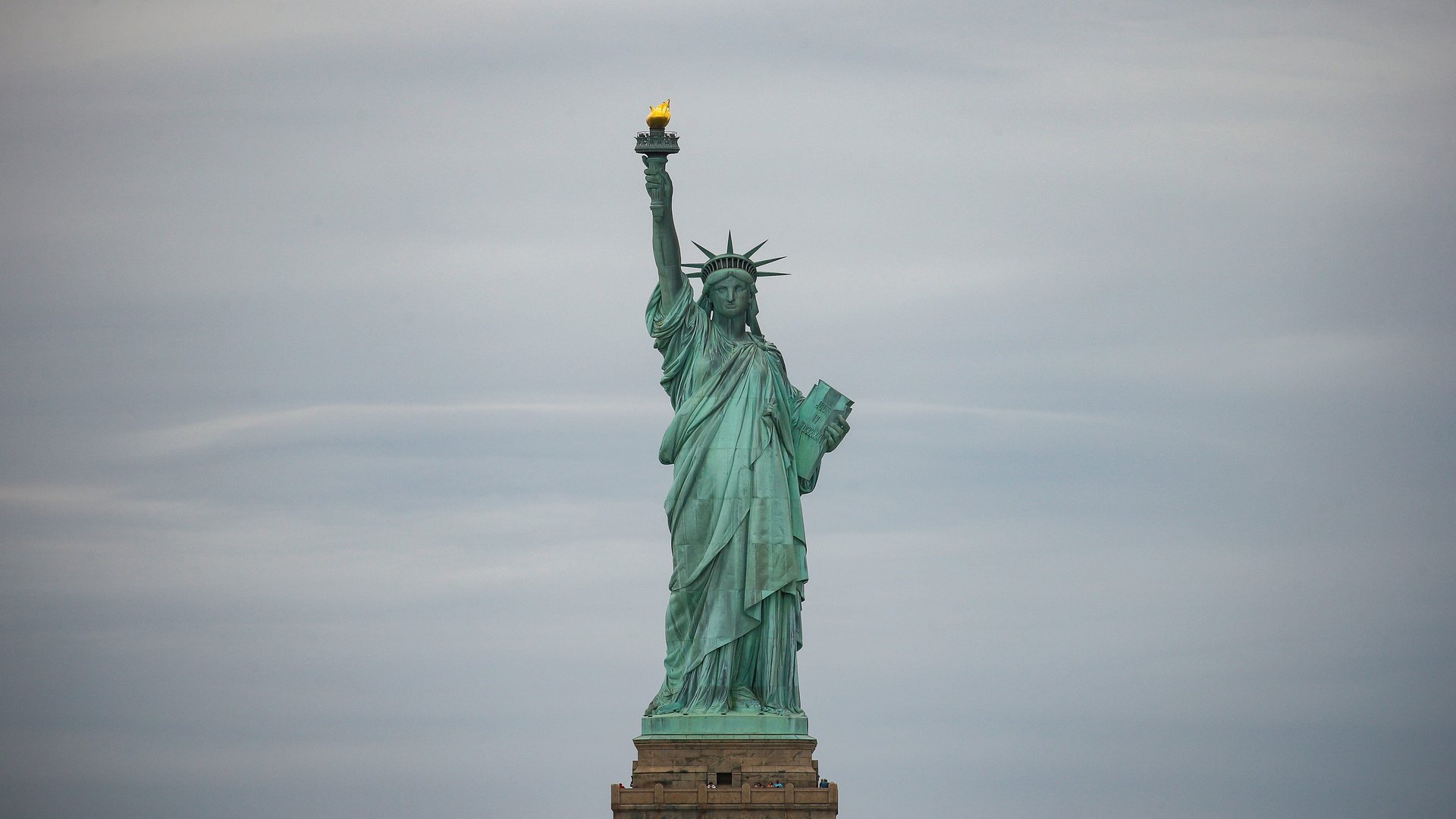A new museum highlights the Statue of Liberty’s link to the Middle East
The Statue of Liberty Museum opens today, and it’s being billed as the most significant change to Liberty Island since the 151-ft (46-m) copper statue was first unveiled in 1886. Yesterday, a star-studded list (paywall) featuring Oprah, Jeff Bezos, Hillary Clinton, and more turned up for the glitzy opening ceremony.


The Statue of Liberty Museum opens today, and it’s being billed as the most significant change to Liberty Island since the 151-ft (46-m) copper statue was first unveiled in 1886. Yesterday, a star-studded list (paywall) featuring Oprah, Jeff Bezos, Hillary Clinton, and more turned up for the glitzy opening ceremony.
About 4.3 million people come to the statue each year, and a mix of factors—security concerns and crowding among them—mean that only about 20% of visitors are able to get inside the historic structure. “So that was the impetus for building the new museum,” said Nick Hubbard, a content designer at ESI Design, the firm tasked with drawing up exhibits at the $100 million project.
The ESI team has sought to offset the restrictions by creating an immersive experience for visitors. It sent camera-equipped drones around Lady Liberty so visitors can see the statue and crown from the outside at the site’s two-story theater. Other parts of the museum detail the statue’s design process, as well as some of the more unexpected bits about its history.
One is that French sculptor Frédéric-Auguste Bartholdi had initially dreamt up the idea of a towering statue in an entirely different part of the world: the Middle East.
Bartholdi had visited Egypt in the 1850s, and drew inspiration from the colossal Abu Simbel structures in the south of the country. He aimed to build a statue representing an Egyptian peasant, a sign that the industrial age had reached the country. Its desired location was at Port Said, the northern terminal of the Suez Canal.
Rulers in Egypt turned down the proposal because the statue was too expensive and old-fashioned. Instead a 180-ft (55-m) lighthouse was erected, and the statue idea transformed into what we know today. Hubbard caveats that there are different interpretations of whether the Egyptian statue led directly to Lady Liberty, but the sketches for it show clear similarities to Lady Liberty.
The rejection in Egypt was fortuitous, considering the statue went on to become a global icon for tolerance and welcoming immigrants. That’s largely because the immigration station on nearby Ellis Island, which more than 12 million immigrants have passed through, opened a few years after the statue was completed.
The hopeful symbol might also have been an unintended one. The man who came up with the idea for a statue, Édouard René Lefèbvre de Laboulaye, was a fierce abolitionist (paywall), and early models of Bartholdi’s designs showed Lady Liberty holding broken chains.
Those shackles remain at the base of Lady Liberty, beneath her feet, something most visitors are unable to spot. But at least the new museum, with its various curated exhibits and immersive experiences, will shine light on this and other lesser-known aspects of the statue to millions of visitors each year.